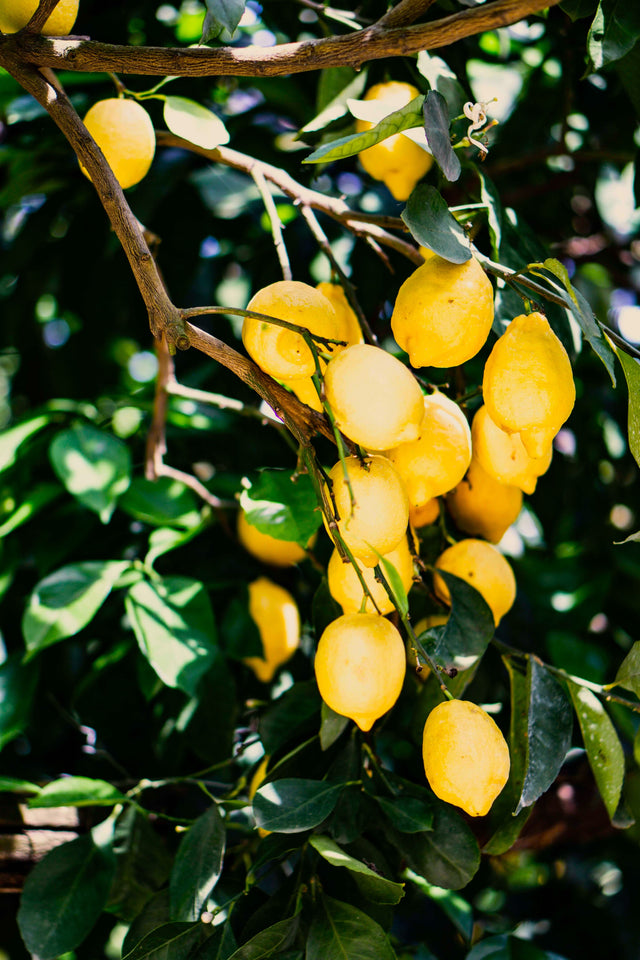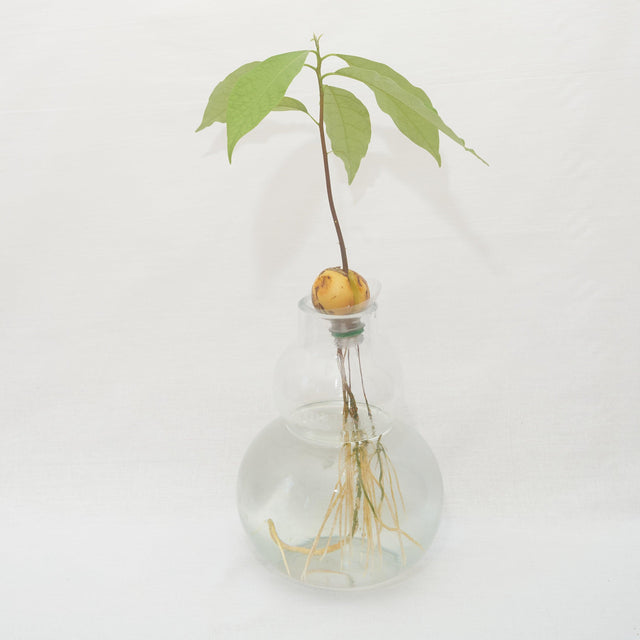Summary of the Pineapple Plant
|
Scientific Name |
Ananas Comosus |
|
Common Name |
Pineapple Plant |
|
Origin |
Paraguay / Brazil |
|
Light Requirements |
Direct sunlight, ~10 hours |
|
Watering |
Water once a week, make sure soil dries out inbetween |
|
Soil |
Good Draining Soil |
|
Temperature |
Between 18C and 35C |
|
Fertilizer |
Dry and Nitrogen rich (NPK 10-10-10) |
|
Humidity |
Room level of humidity, however increase in winter |
|
Pruning |
As soon as you notice drooping/yellowish leaves |
|
Pests and Diseases |
Gnats, mealybugs |
|
Toxic to pets |
No |
|
Maximum Growth |
3 to 6 feet |
Interesting Fact
Did you know that Pineapples are a group of berries that have fused together? Pineapples are a quirky looking fruit, but whether you like to enjoy them on a Hawaiian pizza or on an upside-down cake, they’re a unique addition to your plant collection.
Background
Pineapples originated from South America, between southern Brazil and Paraguay. From here, pineapples quickly spread around the continent up to Mexico and the West Indies, where Columbus found them when visiting Guadeloupe in 1493. Pineapples were historically valuable on long boat trips. Eating pineapple prevented scurvy, and their sweet juice mixed with sand is a great cleaning agent for boats! Now you know a brief history, why not grow your own? They make great air purifiers and are perfect for bringing a tropical ambience indoors when you’re dreaming of summer vacation.
Best Varieties of Pineapple
Pineapples can simply be grown by chopping off and planting the spiky top from a supermarket fruit. But, if you decide you’d like to buy a plant, the best varieties are Smooth Cayenne - a super sweet and tasty fruit. Queen Victoria is a smaller variety that produces fruit.
Timeline and Growth Cycle
In the wild, pineapples grow on the ground and are pollinated by hummingbirds. However, in your warm and cozy home, pineapples will produce fruit in less than two years once rooted. Pineapples are part of the Bromeliad family, so they will start to die back once they flowered. However, baby plants (often called pups) will appear at the base of the plant, and these can be potted up and grown on as new plants.
Set Up and Conditions
To mimic the warm and tropical climate pineapples naturally thrive in, For the best results, keep your pineapple plant in temperatures that range from 65 to 95 degrees Fahrenheit (18 to 35 degrees Celsius) and 5+ hours of direct sunlight, so place them near a radiator and in a bright sunny spot.
You may think 5 hours isn’t much for a tropical plant. But, pineapples are short-day plants, which means they’ll develop faster if they sense over 12 hours of darkness. So, set up a timer on your grow light and leave it on for only 10 hours per day. It’s a good idea to rotate your plant from time to time to stop it from leaning to one side.
The pot and size will vary greatly depending on the variety you decide to grow. Miniature pineapples will grow fine in the pot they came in. However, larger varieties will need to be potted on in a well-draining potting mix and fed during the growing season with food containing equal parts nitrogen, phosphorus, and potassium (NPK 10-10-10).
Watering is a tricky skill to master, with pineapples always water from the top down. Pineapples will grow more slowly if they're not receiving enough water and don’t like to ‘sit’ in water either. You can do a simple test by sinking your finger down into the compost and lifting your pot to feel the weight.
Step-By-Step
- Cut the spiky top off. Around 2cms from the top. Enjoy the fruit!
- Trim off all the fruit and cut around the base to leave the clean central core surrounded by leaves.
- Carefully peel away individual leaves to reveal the length of the stem. This is where the roots will develop.
- Trim the base of the stem, just below the leaf scars, removing all the white stem tissue.
- Fill your pot with multi-purpose compost, then position the pineapple head in the centre, firming more compost around it.
- Water well and place in a warm, bright spot indoors. Once roots start growing from the base of the pot, transplant your pineapple into a larger container.
Propagating
As mentioned previously, when the pineapple plant matures, it will begin producing offshoots (mini pineapple plants) from the base. Carefully remove these cute tiny plants and pot them individually. After the plant fruits and you harvest the fruit, the mother plant will begin to die, so it's best to compost it and concentrate on the mini pineapples previously harvested.
You can also grow a pineapple from the fruit itself – cut off the spiky top, remove the lower leaves to reveal a stem, allow this to dry out, then place it in a pot of compost and water in well.
Harvesting
Pineapple plants will flower 2 years after being planted, and they don’t need to be pollinated to form fruit (and if they are pollinated, they get seeds and are less pleasant to eat). After the flowers form, it generally takes 6 months for pineapples to reach their full, ripe size.
The size of your pineapple will vary depending on the variety. Some pineapple plants are ornamental and will only grow to a small size, and if eaten, they’ll be bitter.
Problems and diseases
If you notice yellow leaves at the base, this can be due to overwatering. This can kill plants if left untreated, as the plant's roots will basically suffocate. Take the plant out of its container, remove any affected roots, and pot it up in fresh compost. Be careful from now on not to overwater your pineapple plant - the soil needs to be moist but not soggy.
You may notice mealybugs or scale insects on the leaves. Wipe them off with cotton wool soaked in washing up liquid and water. Or you can use a spray of washing up liquid.
Around the base of the plant, you may see fungus gnats. These are tiny little black bugs. They’re attracted to moist soil, so let the compost dry out between watering to prevent them from gathering on your plant.
My Pineapple is Drooping - What Should I Do?
Pineapple plants are perennial, meaning they live for multiple years and undergo cycles of growth, fruiting, and renewal. It's completely natural for the fruit to droop and eventually die after it matures. Once the main fruiting cycle is complete, the plant will focus its energy on producing new offshoots, often referred to as pups, at the base. These pups will grow into new pineapple plants and can be separated and potted individually to produce more fruit in the future.
However, if your pineapple plant is drooping and looking unhealthy before the fruit matures, it could be a sign of other issues, such as inadequate light. Pineapples thrive in bright, direct sunlight and need at least 5 hours of it daily to stay healthy. Ensure your plant is placed in a location where it receives ample sunlight or under a grow light for the required duration. If light levels are insufficient, the plant can become weak and exhibit signs of stress, such as drooping leaves.
Additionally, check your watering habits. Pineapples do not like to be overwatered. Ensure that the soil dries out between watering sessions, and always water from the top down. Overwatering can lead to root rot, causing the plant to droop and potentially die. If the soil feels consistently damp or soggy, reduce the frequency of watering and allow the soil to dry out more between sessions. For the best results, you can easily check when your plant needs water using our Soil Moisture Meter.
By understanding the natural life cycle of your pineapple plant and providing the correct care conditions, you can enjoy the unique process of watching new plants emerge and produce fruit, while ensuring your current plant stays healthy and vibrant.
Top Tips
- Don’t overwater. This is the biggest killer of houseplants and will often show yellow leaves.
- Be patient. It can take months for a pineapple to form.
- Dont give up on the pineapple and throw it away if it starts drooping! A new fruit will grow.
- Set it up in a bright space or under a grow light, pineapples love a lot of light! Check out our guide on using grow lights here.
Find similar articles:
Indoor GardeningMentioned in this article
More stories

How To Grow & Care For A Lemon Tree Indoors Using A Grow Light
